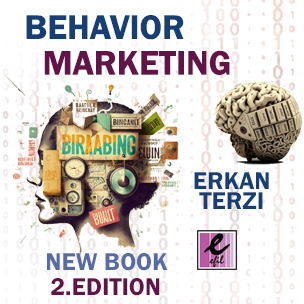Whether you are a small or large business owner or a marketing manager of a company, two major dangers await you when considering the market growth potential and your competitors: the wrong marketing strategies that can be applied for small businesses and the negligence of competitors due to complacency for large businesses. Along with these dangers, the market growth potential of the sector you are in or the products you sell is the most important issue to pay attention to. When I first went to America as a student, I encountered the Blockbuster brand. When I entered the store, there was a wonderful atmosphere, and I even thought there should definitely be similar investments in Turkey. However, over the years, the rise of digitalization and the entry of new generation players like Netflix into the market changed many things. Blockbuster, which could not keep up with this and ignored its competitors, found itself on the list of bankrupt companies. Both underestimating competitors out of complacency and implementing customer demands without considering popular culture led to the downfall of this brand.
One of the most critical questions in brand growth is, “Should we focus on brand loyalty or continue by acquiring new customers?” Although our goal is to protect and grow our brand value, sales remain our primary focus. In this context, whether the prepared plan will be short or long-term is one of the important criteria. In companies with a sales orientation focus, short-term plans are made to increase monthly sales targets. In long-term studies, both brand valuations and sales targets are considered much more. Returning to our previous question, what most marketing or business managers miss in brand loyalty is that while creating brand loyalty, sales can be increased with short-term planning. The Pareto principle (80/20) shows that it is possible to sell more products to customers, i.e., the audience that buys from us, through brand loyalty. In this context, while allocating a portion of the potential power here, it is also important to accelerate our efforts to acquire new customers. Generally, in companies, since brand and marketing managers are separate, neither the brand specialist nor the marketer is aware of this effect. This harms the company, the product, and customer loyalty, but since they do not know the real essence of the matter, no manager wants to evaluate these results.
What you need to do is minimize customer loss and ensure new customer acquisitions. A brand can grow by increasing both penetration and loyalty. In summary, as a brand grows, it gains both penetration and customer loyalty for its market share. This is known as the double jeopardy law. The double jeopardy law was defined by sociologist William McPhee in the 1960s and later described by marketing scientist Andrew S. C. Ehrenberg in the 1980s.
The essence of the matter is, for example, if you are a little-known actor, the rate of loyalty of the audience who likes or knows you is lower than the loyalty rate of the audience of a very well-known actor. For example, Ryan Reynolds has approximately 52 million followers on Instagram, whereas another less well-known Hollywood actor, Michael Keaton, has about 1 million followers. According to the double jeopardy law, the loyalty RATE (note, I’m not saying the number) of Reynolds’ followers is much higher than that of Keaton’s followers. Now, when we apply this to the business world, we can immediately compare the Coca-Cola and Fanta brands. You already know what the answer is. Here, brand recognition and loyalty are the features we need to use. I’m not talking about the number of customers or product sales. This clearly shows the point we need to focus on, apart from periodic planning, as I mentioned in the previous paragraph: penetration and customer loyalty.
Research has shown that cultural, religious, and social norm differences generally do not affect the double jeopardy law in brand growth. Simply put, these differences do not change the result. This shows that the two focus strategies we will use can be valid in every country and even in every sector. I can say that the same result will be obtained regardless of country differences, but different results can be obtained on the sector and product side. This is not general but can be an exception. Research conducted by the Ehrenberg-Bass Institute has shown that brands need to focus on expanding their customer base and increasing customer loyalty in both B2B and B2C fields. In particular, companies using this strategy need to possess “mental availability,” meaning that when a product is to be purchased, these brands come to mind first. Another important feature is “physical availability,” which means the product can be easily obtained through many channels.
We can easily say that penetration and loyalty measurements progress proportionally. This shows that both data can be used in brand growth measurements. You can use both in brand performance measurements. However, there is no rule that brand loyalty will decrease when penetration decreases. However, increasing penetration raises customer loyalty, and increasing customer loyalty (if you use the Pareto principle a little) will increase penetration. Here, the growth rate will always be higher in penetration compared to brand loyalty. The biggest sign that the brand is growing is related to the increase in both these data values.
Returning to our Hollywood example above, high recognition leads to higher loyalty rates. This shows that we need to use recognition in our studies. However, much more important than this will be to increase our number of customers and keep our market share at the top. It is clear that both uses are particularly relevant for products with growth potential or those with competitor market shares. Integrated marketing efforts will serve you in this context. Note, I’m not talking about integrated communication work. Both are quite different topics.
In the general context, one of the companies that does this very well today is Starbucks. Whether you love it or hate it, this company develops strategies to keep customer loyalty high while trying to increase the number of stores globally. Another good example is the Apple brand. For the general marketing strategy, after purchasing a product, the Apple Store offers many other integrated products that you can buy. In this context, the number of customers increases, and special efforts are made for loyalty. I’m talking about a brand where, after purchasing a wired mouse from the San Francisco store, I returned it the next day, and they greeted me with a smile and refunded my money without questioning why I was returning the product. In summary, increase your number of customers, raise the loyalty rates of your existing customers, and prepare new campaigns that will benefit the customers from whom you can achieve high sales. Analyze, interpret, and do not forget competitor tracking. The double jeopardy law can rarely make mistakes in some areas. However, a good marketer can easily understand this with the skills they possess.


